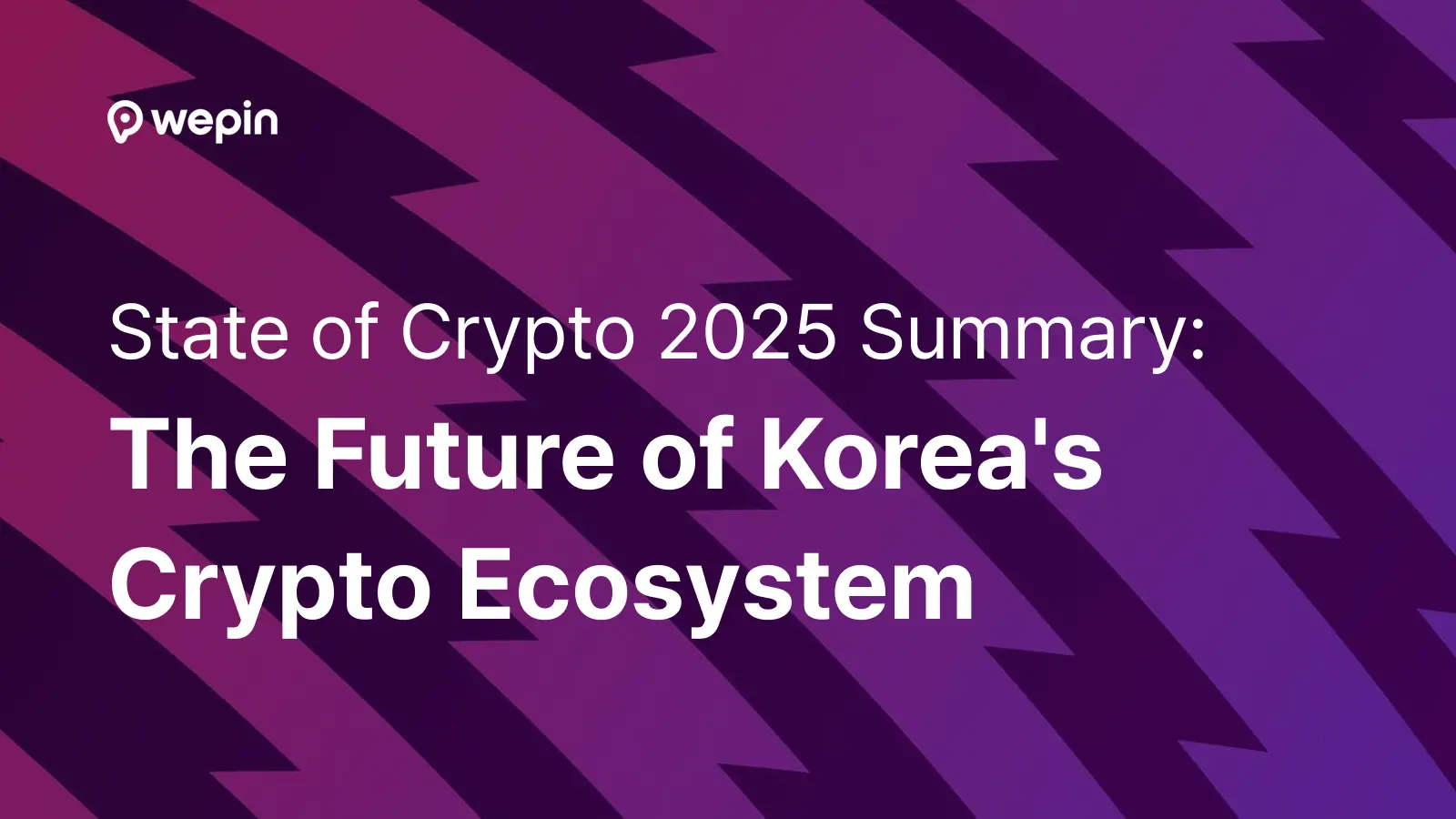[TL;DR]
- CBDCs strengthen national economic sovereignty, while local currencies aim to revitalize regional economies, forming a complementary relationship.
- Embedded wallets abstract complex blockchain technology, enabling the management of both CBDCs and local currencies through a single interface.
- By leveraging blockchain technology and zero-knowledge proofs, embedded wallets maintain the independence of each currency system while balancing context-aware payments and privacy protection.
1. The Multi-Layered Structure of the Digital Currency Ecosystem
1.1. CBDCs at a Global Level and Local Currencies at a Regional Level
Today, digital currencies emerge in various forms based on their purpose and scope. At the national level, CBDCs (Central Bank Digital Currencies) issued by central banks are gaining attention, providing an official payment method tailored for the digital economy era, built on the stability and trust of traditional fiat currencies. More than 100 central banks worldwide, including the Bank of Korea, are actively researching and developing CBDCs. China's digital yuan (e-CNY) has already entered large-scale pilot testing.
At the local level, local currencies serve as tools to boost regional economies. In South Korea, the "Local Love Gift Certificate" system, which expanded significantly in 2019, represents such local currencies and is currently operated by 243 local governments. These currencies are designed to be used exclusively within specific regions, stimulating local consumption and protecting local businesses.
Thus, CBDCs at the national level and local currencies at the regional level pursue different economic objectives. While CBDCs focus on digitizing national economies and improving financial accessibility, local currencies serve as policy instruments tailored to regional characteristics. Web3 and blockchain technology enhance the credibility of these digital currencies by introducing transparency, traceability, and tamper resistance, paving the way for a more efficient and inclusive financial system through decentralized infrastructure.
1.2. A Complementary Relationship: Economic Sovereignty and Regional Economic Revitalization
Although CBDCs and local currencies may appear to be in competition, they can actually form a complementary relationship due to their distinct purposes and roles. CBDCs are a means to reinforce national economic sovereignty in the digital age.
The rise of USD-backed stablecoins like USDT and USDC has raised concerns about the potential erosion of monetary policy influence by central banks, which has become a major driver for CBDC development. With CBDCs, central banks can maintain effective monetary policy control even in the digital economy.
Meanwhile, local currencies are focused on stimulating regional economies and strengthening community engagement. Local currencies encourage local spending, prevent capital outflows, and enhance regional economic multipliers. In South Korea, it is estimated that issuing 1 trillion KRW in local currency leads to a production-induced effect of approximately 1.8 trillion KRW and a value-added effect of around 0.8 trillion KRW, demonstrating substantial economic benefits.
Blockchain and Web3 technologies can further reinforce this complementarity. Smart contracts can automate economic policies by linking central bank monetary strategies with regional economic revitalization initiatives. For example, during an economic downturn, a portion of universal CBDC-based financial support could automatically convert into local currency to encourage local consumption.
The token economy concept in Web3 also presents new possibilities for local currencies. Beyond simply replacing fiat money, local currencies can serve as reward systems for community participation and contributions. A local token could be distributed as compensation for environmental protection, volunteering, or cultural activities, fostering a circular economy where these tokens are used for local goods and services.
However, local currencies are closely tied to municipal fiscal policies, making their integration with CBDCs a complex issue beyond mere technical connectivity. Most local currencies operate with government-funded discounts and incentives to promote regional consumption. Therefore, any linkage between CBDCs and local currencies must carefully consider fiscal and policy-related factors.
1.3. The Integration Potential of Embedded Wallets
As Web3 and blockchain drive innovation in CBDCs and local currencies, embedded wallets serve as the key interface for users to access these technologies easily. Traditional blockchain wallets require mnemonic phrases and private key management, presenting a high barrier to entry for average users. Embedded wallets eliminate this complexity, offering a user-friendly interface seamlessly integrated into existing apps and services.
The most significant advantage of embedded wallets is the ability to manage multiple types of digital assets through a single interface. Users can store and utilize both CBDCs and various local currencies within one wallet, significantly improving user experience and accelerating digital currency adoption.
For instance, in the case of government welfare policies or disaster relief funds issued in CBDC form, embedded wallets can facilitate storage, management, and conversion into local currency as needed. Discounts and cashback incentives applied to local currencies can also be automatically calculated and integrated within the wallet, allowing users to access benefits without complex procedures.
Embedded wallets can also serve as valuable tools for policymakers. When implementing region-specific policies, these wallets can act as delivery channels while providing real-time data for monitoring and analyzing policy effectiveness. For example, conditional grants that restrict spending to specific store types or product categories can be easily implemented.
Additionally, embedded wallets help balance privacy protection and transparency. While blockchain's transparency allows for transaction tracking, technologies such as zero-knowledge proofs enable necessary verifications without exposing personal data. This is a critical factor for both CBDCs and local currencies.
Ultimately, embedded wallets integrate CBDCs and local currencies—each with distinct policy objectives—into a unified user experience, significantly enhancing accessibility and usability. This fosters broader adoption and practical usage of digital currencies, benefiting both national and regional economies.
2. The Role of Embedded Wallets in CBDC Implementation
2.1. The Bank of Korea's CBDC Initiative and Roadmap
The Bank of Korea has been actively researching and developing CBDCs (Central Bank Digital Currencies) since 2020. Key milestones include initial research and technology reviews in 2020, system development and core function testing in 2021, and pilot testing in a simulated environment in 2022 to evaluate functionalities such as payments, remittances, and offline usability. In 2023, further validation was conducted in collaboration with private financial institutions to assess interbank transfers and financial accessibility improvements.
The Bank of Korea's CBDC model involves a dual-tier system in which the central bank issues and manages the total supply of CBDCs, while commercial banks and payment service providers distribute and operate related services for end users. This approach mirrors the current cash distribution system, where the central bank prints currency and commercial banks handle its circulation.
The Bank of Korea's CBDC design principles include:
- Ensuring monetary stability,
- Compatibility with existing financial systems,
- Balancing privacy protection and transparency,
- Enhancing financial accessibility, and
- Maintaining interoperability with international standards.
While the Bank of Korea has not officially announced a launch date, it is expected to complete technological preparations by 2025, with implementation dependent on policy decisions. This timeline aligns with global CBDC development trends and domestic shifts in digital payment environments.
2.2. The Technological Infrastructure for Retail CBDC Distribution
Retail CBDCs are digital currencies intended for direct use by the general public. To ensure their efficient distribution, a robust technological foundation is essential.
Fundamentally, retail CBDC systems must be capable of handling high transaction volumes. In a country like South Korea, where digital payments are ubiquitous, the system must process thousands of transactions per second reliably. A hybrid approach that combines distributed ledger technology (DLT) with centralized databases can be an effective solution.
Additionally, offline payment functionality is crucial for situations with unstable network connectivity or disaster scenarios. Technologies such as NFC, Bluetooth, and QR codes can enable offline transactions, ensuring CBDC usability even in network-disrupted environments.
Retail CBDC systems must also ensure seamless interoperability with existing financial infrastructure. They should integrate smoothly with current payment networks and banking systems while also being adaptable for cross-border payments. This interoperability is key to maximizing CBDC’s practical value and expanding its role in global financial ecosystems.
Security and resilience are also critical components of a CBDC system. The infrastructure must be robust against cyberattacks and system failures, incorporating multi-factor authentication, encryption, and anomaly detection as part of a comprehensive security framework. Moreover, CBDC systems should be designed with scalability in mind to accommodate future technological advancements and policy changes. Modular architecture and API-based frameworks allow the system to adapt and evolve with new requirements.
With this technological foundation in place, embedded wallets become the central user interface for CBDC transactions. When making payments with a CBDC, the embedded wallet provides an intuitive interface for user authentication and transaction confirmation. Additionally, embedded wallets can integrate financial management features, such as balance tracking, transaction history review, and budgeting tools.
Given South Korea’s advanced IT infrastructure and high smartphone penetration rate, a CBDC model integrated with embedded wallets has strong potential for rapid adoption. Furthermore, South Korea's experience with various local currency systems provides valuable insights that can inform CBDC design. The user experience from mobile-based local currency programs and merchant network development strategies can serve as important references for establishing a CBDC ecosystem.
3. The Digital Transformation of Local Currency Systems
3.1. The Current State and Limitations of Local Currencies in South Korea
Since 2019, local currencies in South Korea have expanded rapidly and are now operated by 243 local governments in various forms, such as paper vouchers, card-based, and mobile app-based currencies. The total issuance volume has surged from 2.3 trillion KRW in 2019 to 15 trillion KRW in 2022.
The primary objective of local currencies is to promote local consumption and boost regional economies. Most local currency systems offer users a 5-10% discount, funded by municipal budgets, to encourage spending at small local businesses rather than large retail chains or online platforms.
However, several limitations exist in the current local currency system:
- Each local government operates its own system, leading to a lack of standardization and inconsistent user experiences.
- There is no interoperability between different local currencies, meaning they cannot be used outside their designated regions.
- Administrative costs related to issuance and distribution are significant.
- Real-time data analysis and policy effectiveness measurement are limited, making it difficult to fine-tune policies.
Although some local currencies are issued in digital form, they mostly rely on centralized databases, leaving room for improvements in transparency and accessibility. These issues can be significantly addressed through blockchain adoption.
3.2. The Technological Advantages of Blockchain-Based Local Currencies
Blockchain can provide several key benefits for local currency systems:
- Increased transparency and traceability: Transactions are encrypted and recorded on an immutable ledger, ensuring that all transactions can be verified while maintaining user privacy.
- Programmable currency using smart contracts: Policy-driven financial incentives, such as subsidies limited to specific industries or expiration dates for stimulus vouchers, can be automatically implemented.
- Prevention of fraud and counterfeiting: The immutability of blockchain reduces fraudulent activities such as collusion between merchants and consumers to convert local currency into cash.
- Integration of token economics: Beyond serving as a simple payment method, local currencies can incentivize community participation, rewarding activities such as environmental protection, volunteering, and cultural engagement with local tokens.
By adopting blockchain, local currency systems can evolve beyond their traditional role and become tools for fostering regional economies and community engagement in more innovative ways.
4. Implementing Local Currencies and CBDCs Through Embedded Wallets
4.1. Multi-Currency Management in Embedded Wallets
Embedded wallets provide a unified platform for managing both CBDCs and local currencies, allowing users to access multiple currencies while preserving their distinct economic policies and goals.
In an embedded wallet, CBDCs and local currencies are managed in separate accounts but presented through a consistent interface. Users can view their total digital assets in one place and choose the most appropriate currency for each transaction. For example, they may use a CBDC for nationwide payments and switch to a local currency to enjoy regional discounts.
To enable multi-currency management, embedded wallets integrate various technologies, including blockchain for transparent record-keeping, smart contracts for enforcing policy-driven currency rules, and APIs for interoperability between central banks and municipal governments.
User experience (UX) design is crucial for multi-currency wallets. Clear visual indicators should help users distinguish between different currencies and their applicable regions. The wallet could also provide recommendations for the best currency to use based on the user's location, transaction type, or available incentives.
4.2. Maintaining Currency Independence While Providing a Unified User Experience
Since CBDCs and local currencies serve different policy objectives and have different issuing authorities, it is crucial to maintain their independence. Embedded wallets can facilitate this by preserving the unique rules of each currency while offering users a seamless experience.
CBDCs, issued by central banks, are legal tender usable nationwide, whereas local currencies are issued by local governments and are restricted to designated regions. Embedded wallets respect these differences while simplifying the user experience. For instance, when making a payment, the wallet can automatically filter and display only the currencies accepted at that location.
This approach ensures that local currencies continue to drive regional economic policies while CBDCs focus on financial modernization and inclusion. At the same time, embedded wallets help users easily understand and maximize the benefits of each currency, such as discounts or cashback for local currency payments versus broader acceptance for CBDC transactions.
4.3. Context-Aware Payments and Personalized User Experience
One of the greatest strengths of embedded wallets is the ability to implement context-aware payment systems that consider various factors such as the user’s location, transaction amount, merchant type, and past spending habits.
For example, if a user is shopping at a local market, the wallet could automatically suggest using the relevant local currency, displaying available discounts and expiry dates. For online or cross-regional purchases, the wallet may recommend using a CBDC instead.
Furthermore, machine learning-based personalized recommendations could enhance the user experience. If a user frequently uses local currency for groceries but prefers CBDCs for digital services, the wallet can adapt its recommendations accordingly.
By automating and simplifying payments using QR codes, NFC, or biometric authentication, embedded wallets make digital currency payments more intuitive and accessible to everyday users.
Additionally, embedded wallets can serve as financial management tools by analyzing spending patterns across different currencies and providing budgeting insights, making them more than just a payment tool but a comprehensive financial solution.
Through context awareness and personalization, embedded wallets can bridge the gap between CBDCs and local currencies, ensuring that each currency retains its intended policy functions while enhancing user convenience.
5. Balancing Privacy and Transparency
5.1. Privacy Protection and Selective Disclosure in Embedded Wallets
Privacy is a key factor in user trust and adoption of digital currencies. Embedded wallets must protect users' personal information while complying with regulatory requirements.
Several layers of security are implemented, including data encryption, secure elements (SE), and trusted execution environments (TEE). Additionally, zero-knowledge proof (ZKP) technology allows users to prove eligibility for certain transactions without disclosing sensitive personal data.
Selective disclosure enables users to control the amount of information they share depending on the transaction type. For example, minimal data might be revealed for routine purchases, while more details may be required for financial services like loans or insurance.
5.2. Differentiated Privacy Policies for CBDCs and Local Currencies
Since CBDCs and local currencies have different policy goals, they require distinct privacy approaches. CBDCs may adopt a “controlled anonymity” model, ensuring high privacy for small transactions while allowing authorities to monitor large or suspicious activities.
On the other hand, local currencies may prioritize privacy while still collecting anonymized economic data to help local governments assess economic trends and policy effectiveness.
Embedded wallets enable privacy-conscious transaction verification methods, such as:
- Verifying welfare or subsidy eligibility without revealing income details.
- Confirming local residency for local currency discounts without exposing exact home addresses.
- Age verification for restricted products without revealing the birth date.
- Analyzing economic activity without tracking individual identities.
By integrating zero-knowledge proofs and selective disclosure, embedded wallets allow users to benefit from privacy-enhanced transactions while ensuring regulatory compliance.
6. Conclusion: The Future of Integrated Digital Economies
Embedded wallets act as the key interface that bridges CBDCs and local currencies, ensuring seamless usability while maintaining distinct policy objectives.
CBDCs reinforce national economic sovereignty and financial inclusion, while local currencies enhance regional economies and community engagement. Embedded wallets do not merge the two but maintain their independence while offering a unified user experience.
From a technological perspective, embedded wallets leverage blockchain’s transparency and immutability, smart contracts for programmable policies, and advanced cryptography for privacy protection. Context-aware payment systems further enhance usability by suggesting the best currency based on location, spending habits, and transaction types.
From a policy standpoint, embedded wallets encourage adoption without compromising economic objectives, making digital currencies more effective at both national and local levels.
With South Korea’s advanced IT infrastructure and extensive local currency experience, the country is well-positioned to pioneer a user-centered integrated digital currency system. Lessons from local currency programs can inform CBDC design, creating a globally leading model for digital economies.
In the future, embedded wallets may evolve beyond payments, supporting digital identity management, automated financial services, and AI-driven financial planning, unlocking new possibilities for digital finance.
Ultimately, embedded wallets are the key to harmonizing CBDCs and local currencies, allowing both systems to thrive while enhancing accessibility and usability in the digital age.











